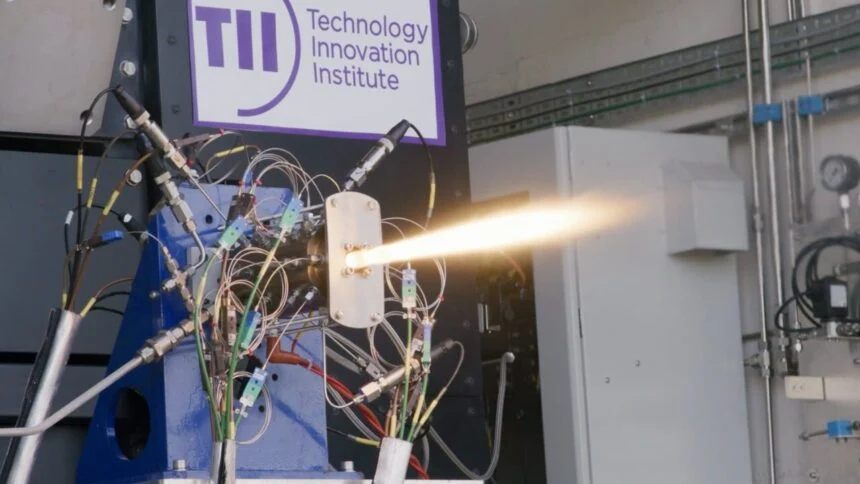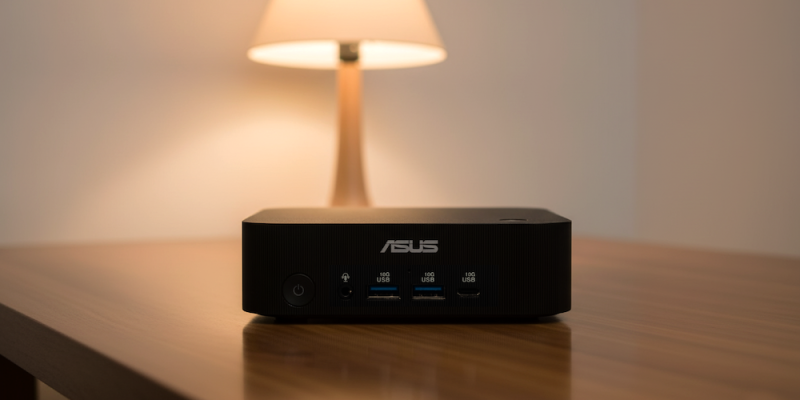Abu Dhabi’s Technology Innovation Institute (TII) has successfully built and fired the UAE’s first liquid rocket engine—a 250-newton thruster designed for small satellites and future deep-space applications. The achievement marks a significant step in the country’s push toward sovereign space technology and local testing capabilities, establishing a stronger foundation for in-house spacecraft development.
The 250 N engine, roughly capable of generating the force needed to lift 25 kilograms on Earth, is not a large launch motor but a precision thruster used in orbit for station-keeping and attitude control. Developed and engineered in the UAE, it has already undergone more than 50 successful firings, reaching up to 94% combustion efficiency—an indication of strong design maturity and repeatable performance.
Initial testing took place in the United Kingdom with Airborne Engineering, where cold-flow and hot-fire campaigns validated the thruster’s stability and reliability. The next phase will shift testing to newly planned facilities in the UAE, allowing TII to shorten iteration cycles, train local teams, and conduct propulsion experiments without international logistics constraints. Establishing domestic testing infrastructure is a key move that transforms a single technical success into a long-term capability pipeline.
For the UAE, developing a liquid rocket engine is a strategic milestone rather than a symbolic one. Liquid propulsion remains essential for reusable and in-space systems, from satellite orbit adjustments to interplanetary missions. By producing this technology domestically, TII reduces reliance on foreign suppliers and restrictive export licenses, keeping both intellectual property and engineering expertise within national borders. It also positions the country to advance more ambitious projects such as lunar and Martian exploration.
The roadmap for TII’s propulsion program extends well beyond this initial engine. Upcoming work includes scaling to higher thrust classes, implementing regenerative cooling for sustained burns, and adopting cryogenic propellants such as liquid oxygen to improve efficiency. Each of these advancements brings the UAE closer to fielding hardware capable of supporting deep-space and scientific missions.
The liquid rocket program sits within TII’s Propulsion and Space Research Centre, one of nine advanced research hubs in Abu Dhabi that focus on building indigenous expertise in areas like materials science, quantum technology, and secure systems. The approach reflects a broader national strategy to strengthen the country’s technological sovereignty and industrial base, while fostering collaboration between Emirati engineers and international specialists.
For local satellite manufacturers, the benefits are immediate. Access to a homegrown propulsion system means shorter turnaround times, easier integration and testing, and the ability to tailor thrusters for specific mission profiles. Reduced dependency on overseas partners also streamlines regulatory compliance and export documentation, helping the UAE’s growing space sector operate more efficiently in a competitive market.
While the new thruster isn’t intended for launch vehicles—it produces 250 newtons of thrust, far less than the hundreds of kilonewtons needed to lift rockets off the ground—it represents a crucial building block in the UAE’s expanding space ecosystem. As testing transitions home and larger engines enter development, this first liquid rocket engine could prove to be the cornerstone of a genuinely sovereign propulsion program, aligning with Abu Dhabi’s broader goal of securing its place among the world’s emerging space powers.







